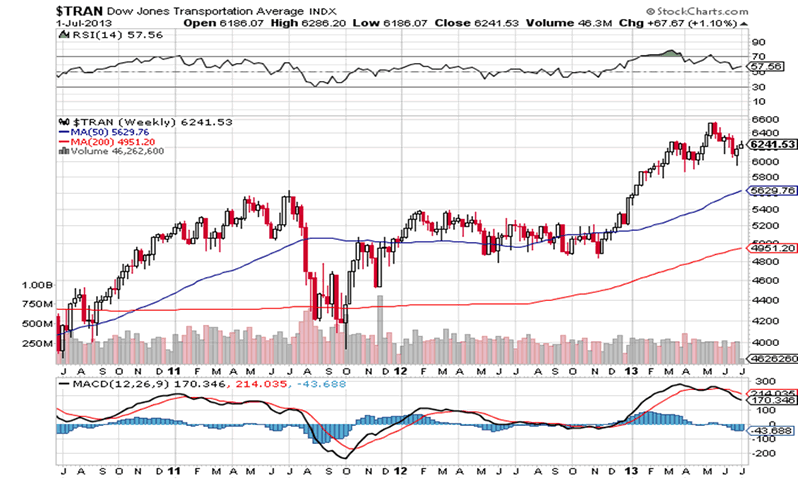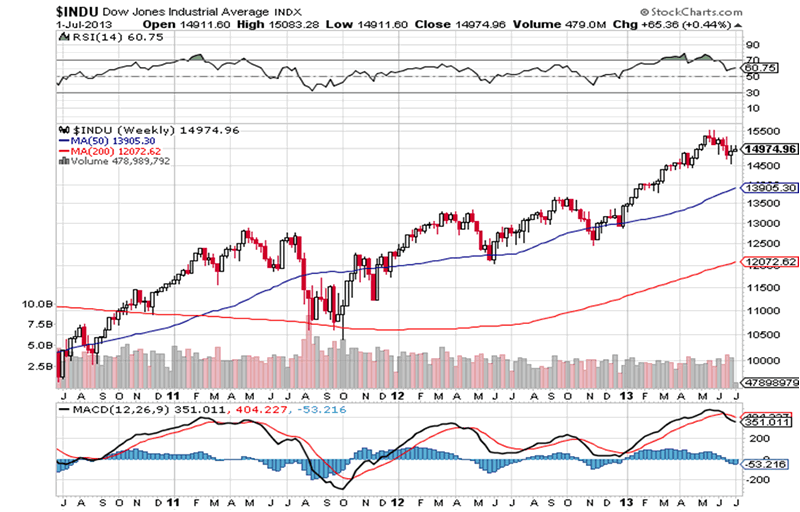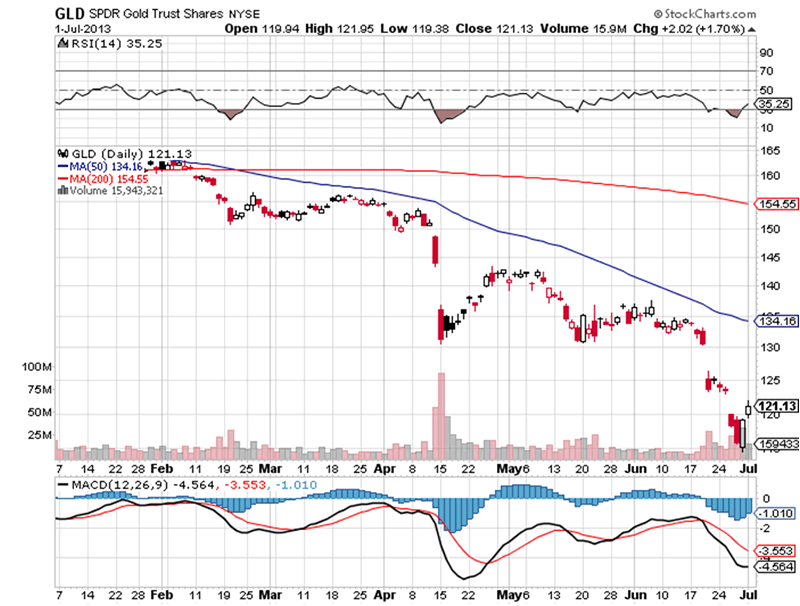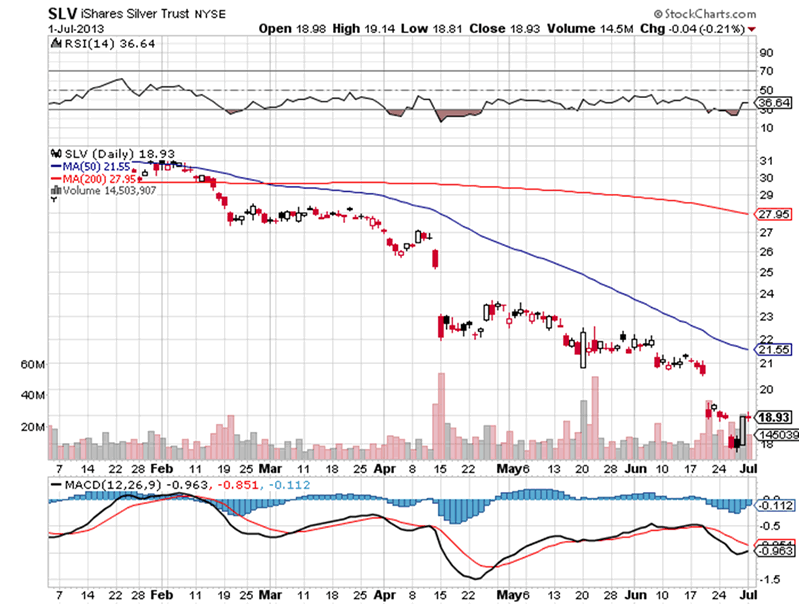Brady Bonds Euro-zone Solutions, Rising Interest Rates Impact on Gold and Silver
Stock-Markets / Financial Markets 2013 Jul 02, 2013 - 04:09 PM GMT Brady Bonds For the Eurozone Are the Only Long Term Solution:
Brady Bonds For the Eurozone Are the Only Long Term Solution:
Ireland’s presidency of the European Union ended last Friday. One of its last acts was to finalize the banking policy whereby future troubled Euro banks will be restructured using the Cypriot “bail-in” model. Ostensibly it would appear that the banking crisis is now behind us and the path is clear on how to move forward and achieve banking stability and re-capitalization.
But nothing could be further from the truth. I believe banking “Eurocrats” are living in a parallel universe, far beyond the framework of us “normal folk”. It is my fervent belief that bailing out a future failing bank with depositors funds, whether it is 8% (as proposed in the new Euro policy) or 80% (as in the case of Cyprus) will be no solution. Sequestering deposits of a bank, to achieve restructure, fundamentally undermines confidence in the overall banking system and I reckon that whilst its use in Cyprus was problematic, its further use will be an utter disaster for the Eurosystem. I do not understand how politician just “don’t get it”.
In my opinion the best way to truly solve the crisis in Euroland is to study the lessons leant by the Fed in the “Mexican Peso Crisis” of the 1980’s. This scenario was brilliantly reported on by Peter Boone of Project Syndicate on the 30th. June:
“Today’s conventional view of the eurozone is that the crisis is over – the intense, often existential concern earlier this year about the common currency’s future has been assuaged, and everything now is back under control.
This is completely at odds with the facts. European bond markets are again delivering a chilling message to global policymakers. With bonds of “peripheral” eurozone nations continuing to fall in value, the risk of Irish, Greek, and Portuguese sovereign defaults is higher than ever.
This comes despite the combined bailout package that the European Union, International Monetary Fund, and European Central Bank created for Greece in May, and despite the ECB’s continuing program of buying peripheral EU countries’ bonds. Heading into its annual meetings in a few weeks (followed by the G-20 summit in Seoul in November), the IMF is bowing to pressure to drop ever-larger sums into the EU with ever-fewer conditions.
Indeed, official rhetoric has turned once again to trying to persuade markets to ignore reality. Patrick Honohan, the governor of Ireland’s central bank, has labeled the interest rates on Irish government bonds “ridiculous” (meaning ridiculously high), and IMF researchers argue that default in Ireland and Greece is “unnecessary, undesirable, and unlikely.”
Disconcertingly reminiscent of the spring – when Jean-Claude Trichet, the ECB president, lashed out at a skeptical bond market and declared a Greek default unfathomable. But markets today think there is a 50% chance that Greece will default within the next five years – and a 25% chance that Ireland will do so. The reason is simple: both Greece and Ireland are likely insolvent.
While the Greek fiscal fiasco is now common knowledge, Ireland’s problems are deeper and less widely understood. In a nutshell: Ireland’s policymakers failed to supervise their banks, and watched (or cheered) from the sidelines as a debt-fueled spending binge generated the “Celtic miracle,” whereby Ireland grew faster than all other EU members and Dublin real estate became some of the most expensive in the world.
By the end of 2008, Ireland’s three main banks had lent more than three times the country’s national income. The crash came in 2009, as Ireland’s real estate boom turned to bust, leaving the country with large insolvent banks, a collapse in budget revenues, and Europe’s largest budget deficit.
Ireland’s banks financed their rapid growth by borrowing from other European banks, so the health of Europe’s financial system has become entwined with the survival of these insolvent banks. It is no surprise that the ECB is now Ireland’s largest creditor – through buying up its government bonds. In the latest data (through the end of August), despite being two-thirds the size, Ireland received more ECB financing than Greece – totaling 75% of Irish GNP and growing rapidly.
The quid pro quo for this easy ECB money is that the Irish government must protect European creditors who would otherwise face large losses. The ensuing massive bank bailout, plus continued budget deficits and declining nominal GNP, means that Ireland’s debt is ballooning, while its capacity to pay has collapsed.
Investors naturally respond to unsustainable debt by selling bonds until interest rates become “ridiculous.” Those high interest rates strangle businesses and households, causing further economic collapse and making debt ever more unsustainable. To halt this downward spiral, Ireland’s risk of insolvency needs to be put to rest. Either banks need to default on their senior obligations, or the government will need to default alongside the banks. In either case, new austerity measures are needed, and Ireland will require substantial bridge financing.
Irish and EU politicians should take the lead in making these tough decisions, but the current leadership will not. Instead, the EU, the ECB, and Ireland have reached a Faustian bargain that keeps Ireland liquid (i.e., it gets euros), but does nothing to halt the growing likelihood of insolvency (i.e., its increasing inability to pay back those euros in the future).
The IMF, which should be standing up to this dangerous bargain, instead plans to open the spigots (with Chinese, American, and other countries’ funds) even more widely to insolvent nations. On August 30, the Fund abolished ceilings on its “Flexible Credit Line” facility, which was introduced in 2009 to provide rapid funds to countries in temporary crisis.
Moreover, the IMF announced a new financing program called a “Precautionary Credit Line,” which will provide funds more quickly and with even fewer conditions – even to countries without “sound public finance” and “effective financial supervision.” The Fund is also hoping to establish a new “Global Stabilization Mechanism” to provide credit lines to regional groupings (like the EU).
A European politician heads the IMF, its board of directors is far more weighted towards Europe than is justified by Europe’s economic relevance, and it is rushing to ease lending conditions to Europe just as EU members are suffering deep insolvency problems.
There is a better solution, pioneered after commercial banks in the United States loaned too much to Latin America in the 1970’s. Sovereign debt was eventually restructured through the creation of “Brady bonds.” The trick was to offer banks the opportunity to swap their claims on (insolvent) Latin American countries into long-maturity, low-coupon bonds that were collateralized with US Treasuries.
The good collateral meant that banks could hold these debts at par on their balance sheets. At the same time, this swap reduced troubled countries’ debt-payment obligations – allowing them to get back on their feet.
Europe could take this route. Rather than continuing to pile new debts onto bad debts, the EU stabilization fund could be used to collateralize such new par bonds. Creditors could be offered these par bonds, or a shorter-term bond with a higher coupon – but with debt principal marked down. The new bonds could be known as Trichet or Merkel/Sarkozy or Honohan bonds – whatever works to build consensus.”
Earnings Season Anxiety:
A new earnings season is upon us so we can expect some major volatility in the weeks dead ahead.
From the charts below of the Dow Industrials and the Dow Transports all is well with the bull from a technical standpoint.
As mentioned in last month’s brief a key price point on the Trannies is the 5900 level. The recent pullback did not breach it. Thus so far so good.
Will it hold over the coming month?
Yesterday’s strong start augurs well for the bulls, despite the late day pullback.
From my perspective the short term market trend is still positive thus the strategy to adopt is to buy on pullbacks and sell into strength.
The McClennan Summation Index, a gauge of overall market breath, is currently very oversold.
This indicates to me that the earnings season end will leave the overall market higher in price. Where it goes from there will very much depend on how the Bernanke transition is handled.
Dow Transports: Weekly

Dow Industrials: Weekly

Gold and Silver Update: It’s All About Rising Interest Rates.
As the Gold and Silver bear market continues I am getting more and more emails from folk in complete denial.
Fundamentally everybody believes that there “should be” a bull market in the money metals given the “wanton debasement of all major currencies”.
However, like it or not, technically the bear in gold and silver is a “fact”.
Why? I reckon the main reason these metals are bearish is the reality that the bond Bull is over and the smart money now sees the inevitability of sharply rising interest rates.
One must remember that as yields rise the cash benefit of holding Gold and Silver decreases in tandem. Gold and Silver do not pay any income. In fact they have a net cost to any holder in the form of insurance and holding charges. It is an inverse relationship that is set to continue at least until the next “macro” crisis event. This may reconfigure the technical picture.
Of course both money metals are so over sold it is inevitable that there will be a “bounce” sometime soon.
GLD: Daily

Silver: Daily

Charts: Courtesy of SharpCharts.Com
By Christopher M. Quigley
B.Sc., M.M.I.I. Grad., M.A.
http://www.wealthbuilder.ie
Mr. Quigley was born in 1958 in Dublin, Ireland. He holds a Bachelor Degree in Accounting and Management from Trinity College Dublin and is a graduate of the Marketing Institute of Ireland. He commenced investing in the stock market in 1989 in Belmont, California where he lived for 6 years. He has developed the Wealthbuilder investment and trading course over the last two decades as a result of research, study and experience. This system marries fundamental analysis with technical analysis and focuses on momentum, value and pension strategies.
Since 2007 Mr. Quigley has written over 80 articles which have been published on popular web sites based in California, New York, London and Dublin.
Mr. Quigley is now lives in Dublin, Ireland and Tampa Bay, Florida.
© 2013 Copyright Christopher M. Quigley - All Rights Reserved
Disclaimer: The above is a matter of opinion provided for general information purposes only and is not intended as investment advice. Information and analysis above are derived from sources and utilising methods believed to be reliable, but we cannot accept responsibility for any trading losses you may incur as a result of this analysis. Individuals should consult with their personal financial advisors before engaging in any trading activities.
Christopher M. Quigley Archive |
© 2005-2022 http://www.MarketOracle.co.uk - The Market Oracle is a FREE Daily Financial Markets Analysis & Forecasting online publication.



